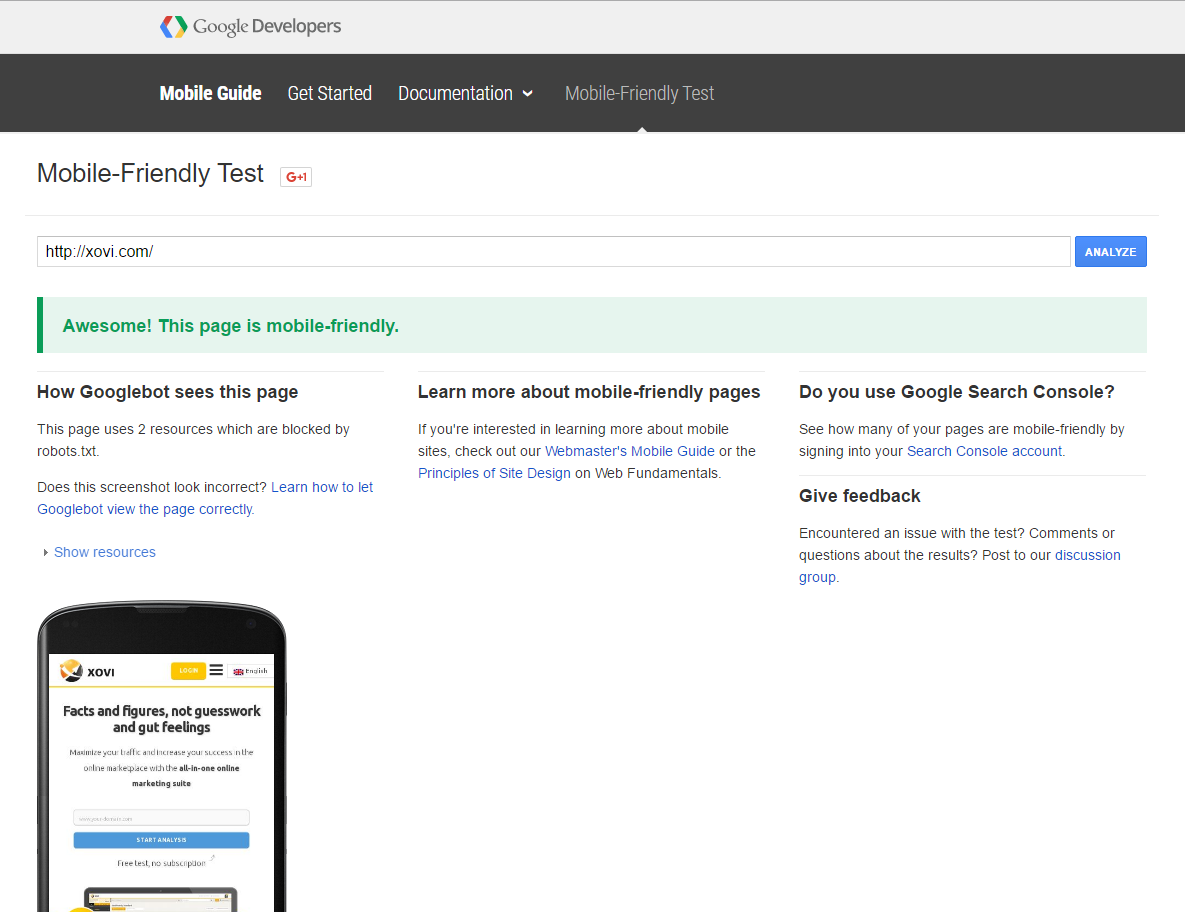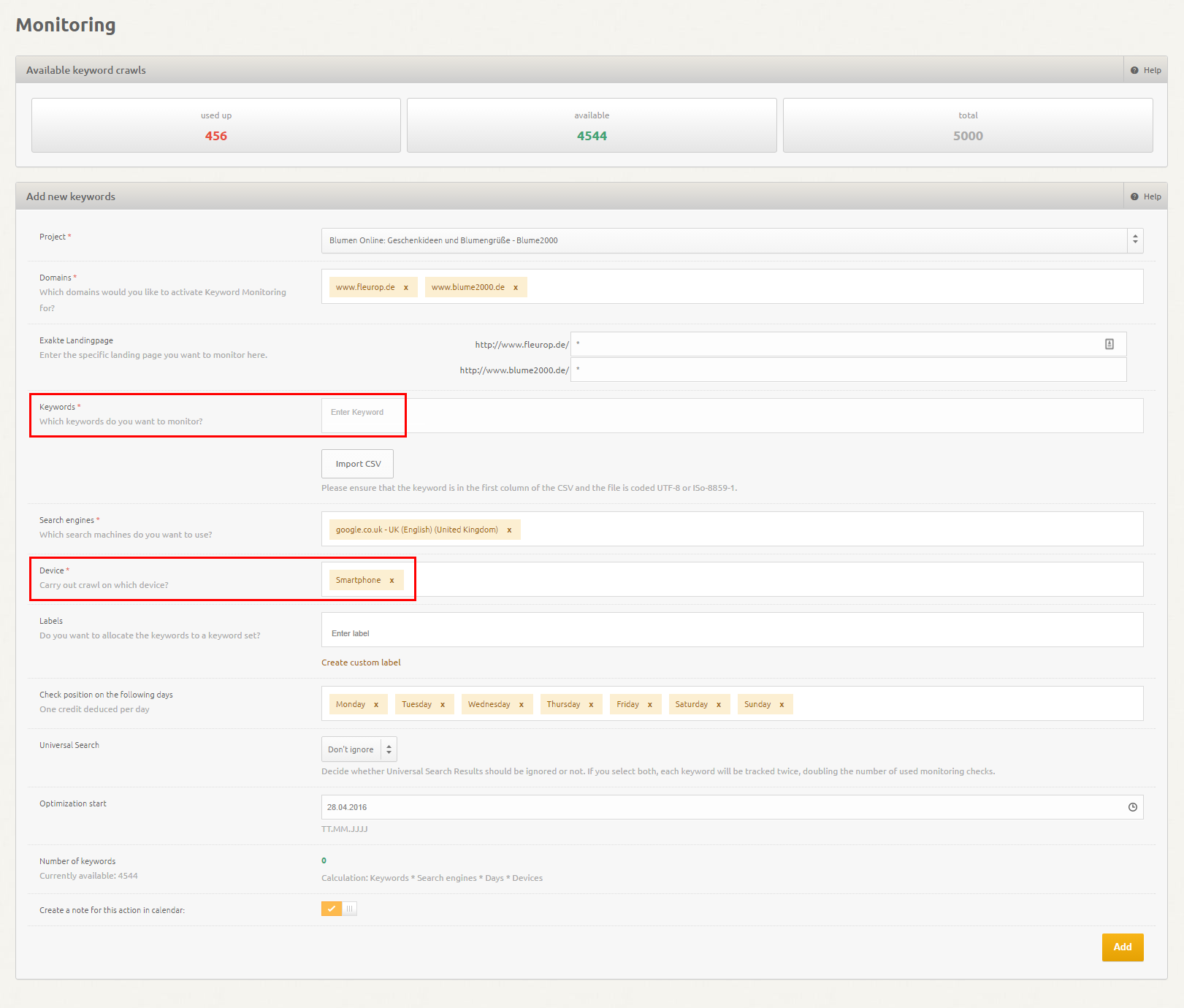Even before 21 April 2015, “Mobilegeddon!” was the word on everybody’s lips in the online world. This was the date from which Google’s new rankings factors for searches from mobile devices would enter into effect and hailed the start of the era of mobile user-friendliness. And who can complain? There’s nothing worse than constantly having to zoom in to read webpages which haven’t been optimized for your smartphone or tablet. But mobile-friendly isn’t just limited to layout and design – it applies to the actual content too. Keyword: Responsive content. We read differently depending on device, preferring short texts with high information density on our small smartphone screens, whilst we’re happier to immerse ourselves in longer pieces on our tablets or laptops.
The industry called the update “Mobilegeddon” because it was feared that websites which didn’t immediately meet the stringent new mobile friendly demands would plummet down the rankings in one huge mobile SEO apocalypse. Luckily however, we’re still here today to say that that wasn’t quite the case. Google explained that non-mobile-optimised websites could still retain their rankings so long as their content was valuable. Phew – disaster averted.
New update
Now, Gary Illyes has announced in Google’s Webmaster Blog that the mobile friendly update is set to receive a boost, and that mobile friendliness will be weighted more heavily in future search. The aim is to display more mobile-optimised in Google’s search results, hence the emphasis on a boost to the mobile factors within the algorithm rather than a new update specifically. The changes are due to come into effect in May 2016 – almost exactly one year since mobile was first introduced. Experience from the past 12 months tells us that these changes really do only affect mobile search. There was speculation initially that mobile changes could have an effect on desktop search but this has not proven to be the case. That’s not to say that nice, clean technical optimisation can’t have a positive effect on your PC rankings, but that’s nothing to do with the mobile friendly update.
If you already made your website mobile-friendly last year, then there’s nothing to worry about – this update won’t affect your domains. But if you haven’t yet got round to it, then now is the time to act! Google released a test tool last year with which you can test exactly how well optimised your website is for Google’s mobile search.
To give you an example of how it works, we tested out XOVI.com:

It looks like we’re ok. But Google will still flag up any errors which you should consider fixing.
What does “mobile friendly” mean for Google?
Google itself provides webmasters with guidelines and tips for mobile devices. The most frequent issues according to the search engine include:
- Blocked JavaScript, CSS or image files
- Unloadable content
- Faulty redirects
- Specific mobile page 404-errors
- App download adverts
- Irrelevant links
- Slow mobile pages
The list is a good starting point when it comes to optimising your website for mobile devices, and Google goes into more detail on each point in its guidelines.
How the Googlebot works for mobile search
If you’re interested in taking a closer look at crawling data in log files, it’s perhaps useful to know how the Googlebot works when it comes across a mobile site, as Google explains.
Previously, the presence of the Googlebot could be spotted like this:
Mozilla/5.0 (iPhone; CPU iPhone OS 8_3 like Mac OS X) AppleWebKit/600.1.4 (KHTML, like Gecko) Version/8.0 Mobile/12F70 Safari/600.1.4 (compatible; Googlebot/2.1; +http://www.google.com/bot.html)
From 18 April 2016, you will see the following:
Mozilla/5.0 (Linux; Android 6.0.1; Nexus 5X Build/MMB29P) AppleWebKit/537.36 (KHTML, like Gecko) Chrome/41.0.2272.96 Mobile Safari/537.36 (compatible; Googlebot/2.1; +http://www.google.com/bot.html)
How to monitor mobile Google rankings
With its Monitoring Tool, the XOVI Suite offers the perfect opportunity to monitor your mobile Google rankings. Keyword Monitoring doesn’t just allow you to choose from 200 international Google versions but also specific devices, including desktop, tablet and smartphone. Remember: the mobile friendly update only applies to smartphone searches and not to tablets. Desktop ranking factors still apply for the latter.
Head to the Monitoring Tool in the XOVI Suite and add your most important keywords for surveillance.
Having added your keywords to the Monitoring Tool, their mobile rankings will be monitored at the intervals you have specified, enabling you to keep a permanent eye on the success of your mobile friendly optimisation measures. Try monitoring rankings on both PC and smartphone to compare performance!
Under Keywords > Monitoring > Monitoring OVI, an individual mobile OVI value for your specific monitoring keyword set is calculated and presented over time. Use XOVI’s SEO tools to monitor the development of your mobile rankings for individual keyword sets – by device.
Don’t forget: good rankings in mobile search aren’t just a result of technical changes on your website – quality of content is important too! If a competitor hasn’t taken any technical measures to optimise for mobile but their content offers better added value for the user, Google will be likely to pick them over you.


